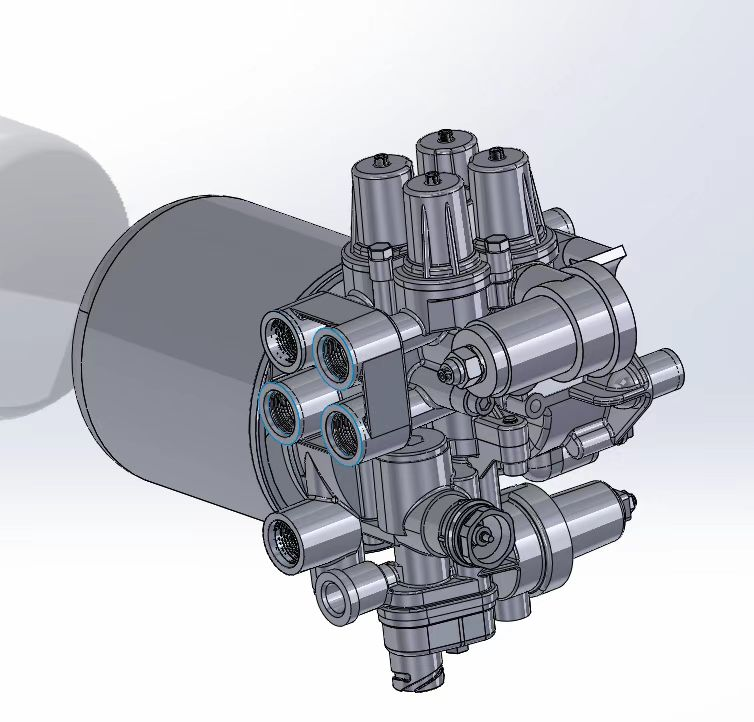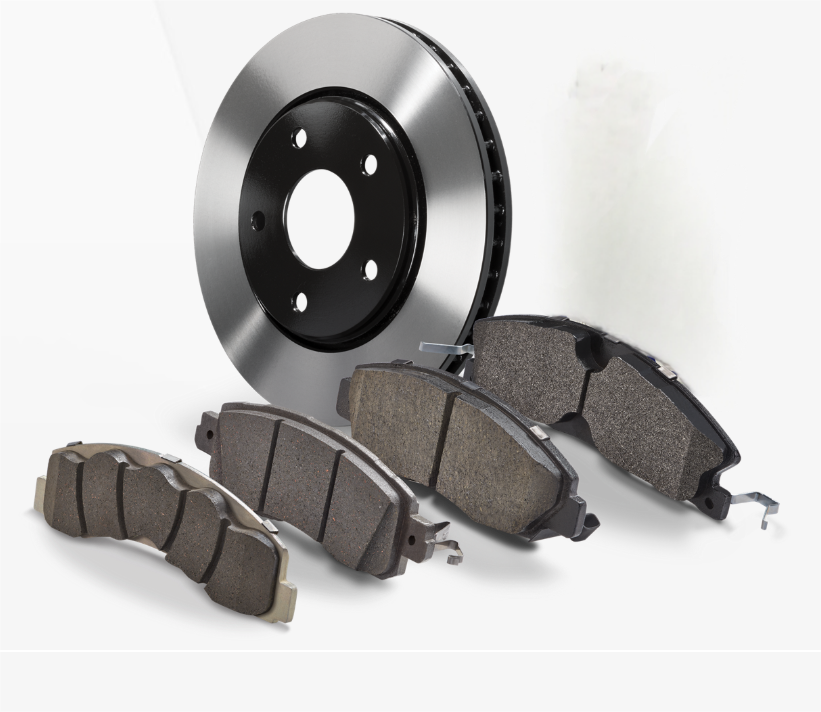Essential Automotive AC Hose Maintenance Practices
Regular Cleaning to Prevent Contamination
Maintaining a clean automotive AC hose matters a lot when it comes to getting the most out of your car's cooling system and making sure it lasts longer. When these hoses get dirty, they basically turn into pathways for all sorts of grime and particles that will definitely cut down on how well the whole system works, sometimes causing actual harm too. As time goes by, stuff builds up inside there, creating problems with airflow restriction and weird pressure issues that mess with how good the AC actually performs. Some studies show cars whose owners take care of their AC hoses regularly tend to see around 15 percent better cooling results than folks who ignore them completely. Makes sense really if you think about it.
To effectively clean your AC hose, follow these steps:
- Gather Supplies: You will need a mild degreaser, soft brush, and a clean cloth.
- Disconnect the AC Hose: Ensure the engine is off, then carefully disconnect the hose.
- Clean the Hose: Apply the degreaser and use the brush to gently scrub away dirt and grime.
- Rinse and Dry: Rinse with water and dry thoroughly with the cloth before reconnecting.
By adhering to regular cleaning practices, you mitigate the risk of dirt-related damage and enhance the system's ability to function efficiently.
Avoiding Heat Exposure and Physical Stress
When temperatures get too hot, they can really damage AC hoses over time, making the materials break down faster than normal. Prolonged heat will often turn these rubber parts brittle, sometimes even causing cracks or bursts when pressure builds up inside. To avoid problems down the road, keep those AC hoses clear of anything on the engine that gives off serious heat. Maybe install some sort of shield between them if possible. This simple step goes a long way toward protecting against all that nasty thermal stress most people don't think about until it's too late.
Keeping temperatures under the manufacturer's specified limits makes a big difference in how long automotive AC hoses last before needing replacement. When mechanics install these components properly and route them away from hot spots in the engine compartment, they reduce the risk of premature wear caused by excessive heat. Research shows that when hoses are positioned at least six inches away from exhaust manifolds or other heat sources, failure rates drop by around 30%. This simple precaution saves money on repairs down the road while keeping cooling systems running efficiently for years longer than expected.
Implementing these practices not only preserves the condition of your hoses but also ensures the entire AC system operates efficiently.
Proper Refrigerant Level Management
Keeping refrigerant levels right is really important for making sure a car's air conditioning works properly. When there's either too much or too little refrigerant in the system, it can actually damage the hoses over time. This means the AC won't cool as well, sometimes not at all, and worst case scenario might need expensive repairs down the road. Most mechanics will tell anyone who asks that checking refrigerant should be part of routine maintenance. The HVAC folks have been saying this for years now, but many drivers still overlook it until problems start showing up during those hot summer days.
To check and maintain refrigerant levels:
- Use a Pressure Gauge: Attach the gauge to the vehicleâs refrigerant service port to measure current levels.
- Compare with Recommended Levels: Refer to your vehicle's manual for specified refrigerant pressure ranges.
- Adjust as Necessary: If levels are too low, recharge the system with the appropriate refrigerant.
By consistently monitoring and adjusting the refrigerant levels, you ensure the hoses are not subject to undue stress and help maintain their structural integrity. This vigilance reduces the risk of leaks and bursts, promoting long-term efficiency and reliability of the air conditioning system.
How to Inspect Your AC Hose Effectively
Visual Checks for Cracks and Corrosion
Looking at an automotive AC hose regularly helps spot early warning signs of damage like cracks or corrosion spots. When someone checks their hoses on a regular basis, problems tend to get caught before they turn into expensive repair bills. A good way to inspect properly is first cleaning off all the dirt buildup so nothing gets missed during examination. Pay special attention around bends in the hose where stress points often develop over time. Most mechanics agree that keeping up with routine checks cuts down大大 on unexpected breakdowns, which saves both time and cash eventually.
Pressure Testing for Leak Detection
Testing for pressure changes remains one of the best ways to find those pesky leaks hiding in AC hoses. The basic idea here is simple enough: check if the hose holds steady pressure over time without dropping off suddenly. When there are drops or spikes in pressure readings, that usually means somewhere along the line there's a breach letting refrigerant escape. Most repair manuals will list what kind of pressure levels count as normal during these tests. Mechanics typically grab a good quality pressure gauge plus some soapy water mixture to spray around suspected areas. Even tiny pinhole leaks show themselves when bubbles start forming at certain spots. Letting these issues linger only makes things worse down the road, both for cooling performance and overall system health.
Checking Hose Flexibility and Connector Integrity
Checking how flexible an AC hose remains is pretty much essential if we want to know whether it's still healthy and working properly. When a hose starts losing its bendiness, that usually means the material is breaking down somewhere inside, and this breakdown will eventually mess with how well the whole system works. Don't forget about those connectors either. They get worn out over time or just don't fit right anymore, and either problem can lead to all sorts of headaches including annoying leaks. Most people find their AC hoses hang around for about 8 to 10 years under normal driving conditions. Still, someone who takes the time to check both flexibility and connector condition regularly might see these components last significantly longer. The result? A cooler car during summer months without unexpected breakdowns ruining road trips.
Optimal Replacement Frequency for AC Hoses
Signs You Need Immediate Replacement
Knowing when an AC hose needs replacing before problems get worse saves money in the long run. Look out for things like poor cooling performance or actual physical damage to the hose itself, such as cracks and leaks. When a car's AC starts blowing warm air instead of cold, chances are good there's something wrong with the hose since it probably can't hold proper pressure anymore. Mechanics generally advise getting damaged hoses fixed right away rather than waiting until bigger problems develop later on. Keeping those parts working properly makes all the difference for how well the whole cooling system functions across different driving conditions.
Average Lifespan Expectations
Most automotive AC hoses tend to last around 8 to 10 years before needing replacement, though actual durability varies quite a bit depending on circumstances. Regular exposure to harsh weather extremes really takes a toll on these components over time, sometimes cutting down their useful life by half or more. While car makers do provide some general expectations about how long parts should last, what matters most is keeping up with routine checks and maintenance work. Want your AC system to stay reliable? Keep an eye on refrigerant levels and inspect those hoses at least once every six months for cracks or leaks. Taking care of these details now prevents bigger problems later and protects all the money already spent fixing other issues with the car.
Matching Replacement Schedules to Climate Conditions
AC hoses don't last forever, and how long they stick around depends a lot on where someone lives. When temperatures climb and humidity hangs in the air, those hoses start to suffer. The rubber gets soft, cracks form faster, and before long, leaks happen. For folks living in places where summer feels like an oven or winter brings relentless dampness, it makes sense to watch those hoses closer than normal. Many mechanics will tell stories about customers who wait too long between replacements only to end up stranded somewhere inconvenient. Drivers from desert areas or coastal towns often mention better results when they swap out their AC hoses sooner rather than later. Their cars run cooler, the compressor works less hard, and nobody wants to deal with a broken down car on a hot day anyway.
Troubleshooting Common AC Hose Failures
Addressing Refrigerant Leaks Promptly
Refrigerant leaks are a critical issue in automotive AC systems and should be addressed promptly to maintain system efficiency. Without timely action, refrigerant leaks can lead to reduced cooling and potentially cause further damage to the AC compressor. Here's a simple guide to help identify and rectify these leaks:
- Visual Inspection: Check for oily residue around AC hose connections, which may indicate a leak.
- Use of Leak Detection Tools: Utilize UV dye and a UV light to pinpoint the exact location of leaks.
- Listening for Hissing Noises: Hissing sounds may suggest a significant leak in the system.
In cases where DIY methods are inadequate or if the leak persists, automotive experts recommend seeking professional assistance. Delaying the repair of refrigerant leaks can lead to expensive replacements, so act promptly to prevent further complications.
Repair vs. Replacement Decision Guide
Deciding whether to repair or replace a damaged AC hose requires careful consideration of several factors. This decision often hinges on:
- Severity of Damage: Minor leaks or cracks may be repaired easily, while extensive damage might necessitate replacement.
- Cost: Evaluate the repair costs versus replacement expenses, considering long-term reliance on the part.
- Age and Condition of the Hose: Older hoses with recurrent issues are often better replaced to ensure enduring reliability.
According to industry standards, minor leaks can sometimes be patched, but experts often cite replacement as the preferred option for severely damaged hoses to guarantee long-term efficiency and safety. When in doubt, consulting a professional can offer guidance tailored to your specific situation.
Managing Compression Fitting Failures
Compression fittings play a vital role in maintaining airtight connections within an AC system, but failures can occur due to wear and tear or incorrect installation. Hereâs how you can identify and manage these issues:
- Inspection for Tightness: Regularly check if the fittings are loose or misaligned.
- Detecting Corrosion: Look for signs of corrosion around fittings as they can weaken the connection.
- Replacement of Faulty Fittings: If a failure is detected, it may be necessary to replace or re-secure the fitting.
To prevent these failures, professionals advise using high-quality fittings and inspecting them regularly. Proper maintenance practices, including checking for correct alignment and tightness, can significantly reduce the occurrence of compression fitting failures.
Innovations in Automotive Hose Technology
Anti-Permeation Barrier Developments
The latest developments in anti-permeation barrier tech are making a real difference in automotive air conditioning hoses. Manufacturers now incorporate specialized materials that form tighter seals against refrigerant loss, which means better efficiency and longer lasting performance from the entire cooling system. When less refrigerant escapes through the hose walls, mechanics don't have to keep topping off systems so often, and car owners end up with greener vehicles since fewer refrigerants leak into the atmosphere. Field tests on modern hoses show these barriers work well even when exposed to extreme temperatures and road vibrations. What we're seeing here isn't just incremental improvement but a fundamental shift in how automotive manufacturers approach hose design for both performance and environmental reasons.
High-Performance Multi-Refrigerant Hoses
High performance multi refrigerant hoses represent a big step forward for car HVAC systems. They can work with different types of refrigerants, so they stay useful even as refrigerant tech keeps changing over time. Mechanics no longer need to worry about matching specific hoses to specific refrigerants, cutting down on confusion during repairs and keeping systems running smoother. The automotive industry is already seeing benefits from this development. Shops report fewer headaches when dealing with older vehicles alongside newer models using different refrigerants. As manufacturers continue to adopt these versatile hoses, we might see better climate control solutions across all vehicle types while also reducing waste from obsolete parts.
Smart Monitoring Systems for Hose Health
Smart monitoring systems for air conditioning hoses represent something pretty cool in the world of car maintenance and keeping those HVAC systems running smoothly for longer periods. What these systems do basically is keep tabs on hose conditions all the time, sending out warnings when problems start showing up so they don't turn into big expensive repairs down the road. From a cost standpoint, this kind of ahead-of-the-curve maintenance really cuts down what people spend on fixes while also extending how long those hoses last overall. According to studies we've seen, incorporating smart tech into regular hose checks helps manage hose health better, which means fewer surprise breakdowns and better performance across the board for vehicle owners looking to save money and avoid headaches.







